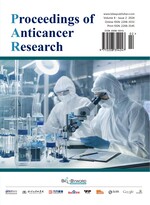Abstract
Objective: To explore the application value of liver function and serological index detection in diagnosing fatty liver. Methods: Ninety patients with fatty liver disease (disease group) and ninety healthy subjects (healthy group) were selected as the subjects of this study. They all underwent liver function index testing and serological index testing. Test results were compared, and the diagnostic accuracy of single and combined tests was evaluated. Results: Liver function indicators of patients in the disease group were higher than those in the healthy group, with severe patients exhibiting higher levels than moderate patients and mild patients (P < 0.05). Serological indicators in patients in the disease group were higher than those in the healthy group, with severe patients showing higher levels than moderate patients and mild patients (P < 0.05). The diagnostic accuracy of liver function index testing was higher than that of serological index testing, and the accuracy of combined testing was higher than that of single testing (P < 0.05). Conclusion: In diagnosing fatty liver, combining liver function testing and serological testing enables the initial diagnosis of the disease and facilitates the accurate assessment of its severity.
References
Zhang Y, Tong Y, Liu X, et al., 2023, Expression Changes and Diagnostic Value of miRNA-223 in Elderly Patients with Non-Alcoholic Fatty Liver. Gerontology and Health Care, 29(5): 885–888.
Wang Y, Zhao J, Zhou S, et al., 2021, Analysis of the Diagnostic Efficacy of Forns Index, FIB-4, APRI, and GPR for Liver Fibrosis in Patients with HBV Infection and Non-Alcoholic Fatty Liver Disease. Journal of PLA Medicine, 33(7): 72–77.
Ye Y, Pan L, Bao D, et al., 2021, Diagnostic Value of Golgi Protein 73 and FIB4 Index in Non-Alcoholic Fatty Liver Disease Cirrhosis. Zhejiang Clinical Medicine, 23(11): 1575–1577.
Huang Y, Ren Y, Yang Y, et al., 2022, Effect of Blood Lipid Concentration on Diagnosing Fatty Liver with MRI In-Phase and Reverse-Phase Imaging. Chinese Physician Journal, 24(5): 753–755.
Huang M, Qin Q, Yan S, et al., 2022, Research on the Diagnostic Efficacy of Obesity-Related Indicators for Non-Alcoholic Fatty Liver Disease. Chinese Journal of Preventive Medicine, 23(4): 255–259.
Zhang D, Sun F, Wang G, et al., 2023, Preliminary Study on the Quantitative Assessment of IDEAL-IQ and Its Correlation with Blood Lipid Content in Patients with Non-Alcoholic Fatty Liver Disease. Journal of Practical Radiology, 39(1): 66–69.
Lin J, Liang Z, Zhang Y, et al., 2023, Research on Influencing Factors Related to the Onset of Non-Alcoholic Fatty Liver – Based on Subjects from a Physical Examination Center in Nanning, Guangxi. Guangxi Science, 30(4): 821–828.
Li X, Liu M, Yin X, et al., 2023, Diagnostic Value of Ultrasound-Guided Percutaneous Liver Tissue Biopsy in Early Liver Cancer. Guizhou Medicine, 47(3): 443–444.
Peng X, Gong X, Guo Y, et al., 2023, Predictive Value of Liver Biochemical Indicators Combined with MRI In-Phase and Anti-Phase for Fat Quantification in Non-Alcoholic Fatty Liver. Liver, 28(6): 711–715.
Ze N, Mima T, Tashi D, 2023, Analysis of the Correlation between Serum A1AT Levels and Type 2 Diabetes Combined with Non-Alcoholic Fatty Liver and Liver Fibrosis. Chinese Clinical New Medicine, 16(8): 816–820.
Wu C, Zhang C, Xu H, et al., 2023, Analysis of the Epidemiological Research and Diagnosis Status of Non-Alcoholic Fatty Liver Disease in China. China Medical Herald, 20(11): 158–161.
Fang D, Xiao Q, Yang L, et al., 2023, Study on Serum Lipidomics Analysis and Diagnostic Value of Patients with Type 2 Diabetes Complicated with Non-Alcoholic Steatohepatitis. Journal of Modern Laboratory Medicine, 38(3): 159–164.
